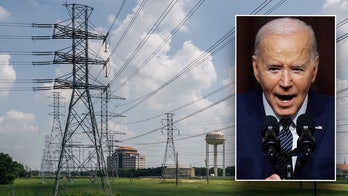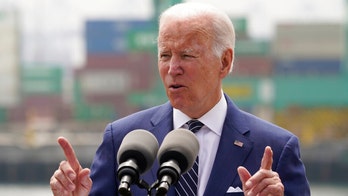I didn't understand what it meant to be an American until I stood on Omaha Beach.
Two weeks ago I was in northern France, a guest of U.S. Army Europe and the current commanding general Lt. Gen. Mark Hertling, whom I had first met in Mosul, Iraq, after a bruising winter following the surge. His troops had turned the tide in what seemed like a losing war. Al Qaeda was on the run and, as with Afghanistan today, alliances were frayed.
Hertling asked me to join his Army "staff ride" to the battlefields of Normandy with about 30 generals and staff officers, some of whom were about to deploy to Afghanistan. The "staff ride," I soon learned, is a tradition that dates back to Napoleonic times. An Army general takes his staff on a ride across the battlefields of yore. They are a history lesson and strategic leadership training exercise all wrapped into one. I was invited to observe and also to give the perspective of the press -- recorders of military history since the earliest battles.
On the day we arrived in Caen, France, on May 15, newly elected President Francois Hollande took the oath of office. His first stop 62 years after the end of World War II was, ironically, to the German capital to meet with German Chancellor Angela Merkel. As we prepared to walk to battlefields where U.S., British, Canadian and French troops rescued Europe from the Nazis, I couldn't believe a French president less than a century later had to go to Germany to kiss the ring of its leader.
As five retired West Point and War College Army historians marched us through the bocage and onto hills that were the prizes of armies and artillery which swept to victory against the odds, those staff officers along for the ride played the roles of various officers and characters from 1945, reading from their diaries and personal memoirs, making their leadership decisions come to life as we walked the battlefield.
Hertling challenged his team to look at the inevitable parallels to the recent and current conflicts in Iraq and Afghanistan. "If you want a new idea, read an old book," Hertling quoted his former roommate Gen. Martin Dempsey, now chairman of the Joint Chiefs of Staff, as saying.
"There is nothing new in conflict," Hertling added. The next four days of the staff ride would focus on how to manage transitions during a war.
Gen. Dwight D. Eisenhower complained in one of his diary entries that despite a great deal of success in the days after D-Day, The New York Times simply reported bad news and failed to note the progress being made. "As for myself, I am indifferent to what The New York Times or any newspaper may say about my conduct of this operation," Ike wrote to Gen. George Marshall on Aug. 19, 1944. "But it is a matter of deep concern that you and the Secretary of War should be disturbed because I have as yet been unable to put into effect an arrangement which I fully agree is now logical and is awaiting only the physical means for implementation."
Alliances were strained between Britain's Field Marshall Bernard Montgomery and the leaders of the Canadian and French troops. Gen. Charles de Gaulle -- not the combat reporters travelling with Gen. Omar Bradley's 1st Division, the 4th ID, 82nd and 101st Airborne regiments -- was responsible for the greatest breach in operational security, pronouncing to the Nazi Panzer commanders that the allied invasion was complete. Fortunately for the troops on the ground, the Third Reich commanders including Field Marshall Erwin Rommel did not believe the loud-mouthed French "ally."
In a moment that reminded some of the indiscretion that got another American general fired from theater during the Afghan conflict, indiscreet talk from General George S. Patton nearly ended his career when he bragged to journalists at a garden party in Britain that the allies planned to divide up France. It was an embarrassing admission that forced Eisenhower to order his brash commander home. He then kept Patton in England for a surprise entry a few days into the invasion.
A total of 160,000 Allied troops, 5000 ships and 13,000 aircraft were involved on June 6, 1945. Not everyone agreed with the plans.
Eisenhower was frustrated with Montgomery's slow and methodical movements. He needed the British to speed up. There were wartime caveats that strained allied relations, just as there are in Afghanistan today. They went to war without the equipment they needed. But changes to tanks on the battlefield allowed them to overcome obstacles such as thick hedgerows which blocked their tanks. The innovation came on the battlefield.
There were intelligence failures that placed the Germans somewhere other than where they were. There were operational failures that scattered the paratroopers miles from their landing zone. But intuition and sheer grit helped overcome the pure chaos in the days and weeks that followed the D-Day invasion. The weather didn't cooperate but the allies maintained the element of surprise. They did not telegraph all that they were doing through the media. The media, which were embedded, kept their secret because their lives depended on it.
In fact, as we walked up the hill from Omaha Beach, our guide pointed to the hill where one of the wartime photographers, perhaps Robert Capa, stood and pointed his Leica at the men storming the beaches. Had those troops and commanders not trusted the press to be embedded, we would never have those iconic images of eventual triumph, as painful as those first moments were.
I entered the cemetery at Colleville Sur Mer with the U.S. Ambassador to Luxembourg, Robert Mandell, who was travelling with us. We had the great fortune to enter the cemetery after it had closed, cleared of all visitors. Those moments in the fading light were some of the most profound I have ever had. We placed a rock from Omaha Beach on a Jewish tombstone. The Star of David was backed up by a row of crosses.
Of 16 tanks at Omaha, only two survived the landing. All the radio communications were lost. But not all the news was bad on that first day -- to the West at Utah Beach, 23,000 troops landed from the 4th Infantry Division. Only 197 died. Among those who reported on the Utah Beach landing was none other than Sgt. Andy Rooney, working for Stars and Stripes long before he joined CBS. His badge from that event hangs in our Pentagon booth where I work side-by-side with his grandson, Justin Fishel, Fox News' Pentagon producer.
"Positions were wiped out, tanks overturned and buried, infantry positions flattened and all roads and tracks destroyed," Rooney wrote in his memoir, 'My War.' "By midday the entire area resembled a moon landscape, with the bomb craters touching, rim to rim. All signal communications had been cut and no command was possible. The shock effect on troops was indescribable."
Imagine if he and the other combat reporters had not been embedded.
"As you look across the rows of crosses and think of the boys under them who died that day," Rooney continued. "Even if you didn't know anyone who died, the heart knows something the brain does not -- and you weep. If you think the world is selfish and rotten go to the cemetery at Colleville overlooking Omaha Beach. See what one group of men did for another on D-Day, June 6, 1944."
Last night in honor of Memorial Day, I re-watched "The Longest Day," the 1962 movie starring John Wayne and Robert Mitchum among others. It is as much documentary as it is Hollywood movie. Historically accurate, according to the retired West Point historians with whom we travelled.
In honor of Memorial Day, every American should go back and watch that movie and remember there are times that unwieldy alliances can change the course of history, even when the mission looks impossible as it did for those American Rangers looking up the cliffs of Pointe du Hoc.




